Regardless of where you want to move, there are tons of options for the types of homes you can buy. Your choices stretch from basic single-family and multi-family homes to condos and townhouses. Some jumping-off points for making a final decision on a home include the number of bedrooms and bathrooms it has and whether it has the space to fit your family comfortably. In a more practical sense, knowing what style of home you want beforehand will help you find a suitable mortgage. When you’re ready for your next home, you can work with a financial advisor to get your finances in order and make sure you’re buying a house you can afford.
Breaking Down the Different Types of Homes
Homes come in all sorts of variations. There are ranch-style homes that are long and flat and single-family homes that have multiple floors. For a more community-based living approach, there are condominiums and co-ops. If you’re living in a city, your choices might be relegated to apartments and townhouses.
In the end, though, there’s no right choice for everyone. Your home search is a personal journey that should take into account only your and your family’s needs. Here are some questions to consider:
- Is there enough space (backyard, play areas etc.) for your children and/or pets?
- What is the quality of the schools in the neighborhood?
- Is the house close enough to public transportation (if you need it)?
- Are there enough bedrooms and bathrooms for the entire family?
- Is the neighborhood in the home is located satisfactory to you?
- Is there heavy foot or car traffic in the vicinity of the home?
- Does the home come with enough street or driveway parking space?
- How much house can you afford?
By determining the answers to these questions and other similar ones, you can quickly narrow down the homes that fit your needs.
Single-Family vs. Multi-Family
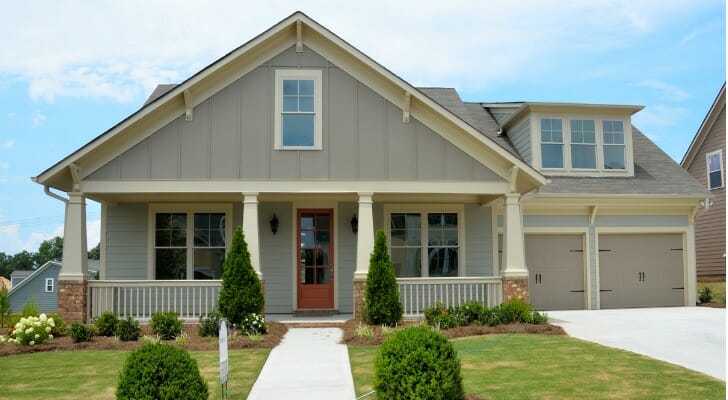
One of the most basic distinctions between homes on the market is whether they’re “single-family” or “multi-family.” As you might expect, a single-family home is built to house just one family. In turn, the bedrooms in these houses usually don’t have common walls or widely shared spaces.
On the other hand, a multi-family home is often a duplex or triplex. Because of their multiple floors, these homes can theoretically hold more than one family in completely separate living quarters.
The status of your new home as either a single-family or multi-family building could affect your mortgage situation. This is especially true of multi-family homebuyers that are looking to rent out the other floors to tenants.
Types of Homes
Now that we’ve analyzed the attributes of different types of homes, let’s take a look at each type and see how they stand out from one another. Here are the most popular types of homes that you may want to consider buying:
Ranch-Style Home

Ranch houses were, at one point, the most popular style of home in the U.S. These homes have unique characteristics, like being single-story with low and long roofs. They generally boast living rooms that combine with open dining rooms and kitchens. Bedrooms are often separate, and a full basement and patio are obligatory.
Every now and then, you may come across a split-level ranch, which has more than one floor. Other common types of ranch-style homes include the California ranch, suburban ranch and raised ranch.
Bungalow
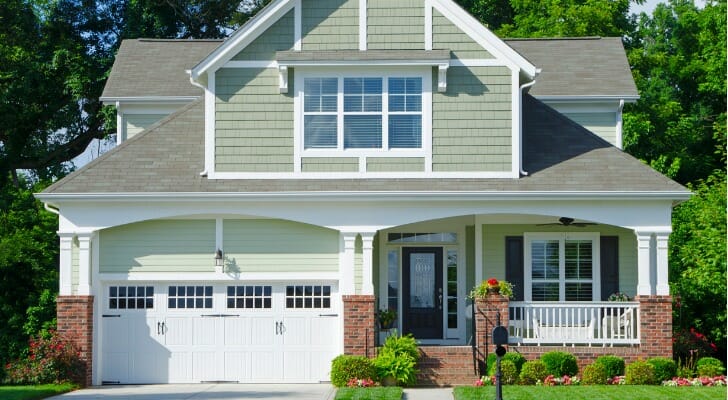
Bungalow homes originated in Bengal, India (hence their name). From there, the design became popular throughout England and, eventually, the U.S.
Bungalows sometimes mimic the features of cottages and cabins. But the best way to tell if a home is actually a bungalow is if it has:
- A small porch accented by square columns
- A compact, proportionate front
- A low, open roof
Bungalows have evolved quite a bit since their humble beginnings. The most traditional version of the bungalow is the “Craftsman” bungalow, of which there are many. California bungalows, modern bungalows and prairie bungalows are a few other types to check out.
Mansions & McMansions
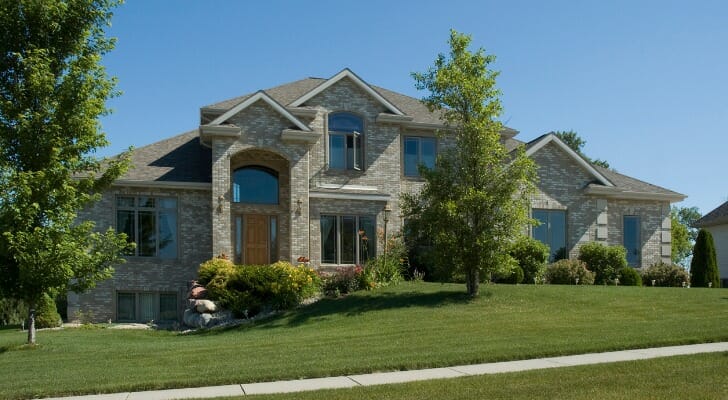
“Mansion” and “McMansion” are frequently used interchangeably, but they’re actually very different. Mansions describe exactly what you’d expect: homes that are upwards of 5,000 square feet. But mansions are typically more than just homes, as they can incorporate tennis courts, massive gardens and other high-end amenities.
McMansions, conversely, feature a much more mass-produced look. While these homes are 2,000 or more square feet in size, they are much less grandiose. At their core, a McMansion is just a large, more luxurious single- or multi-family home.
Apartment
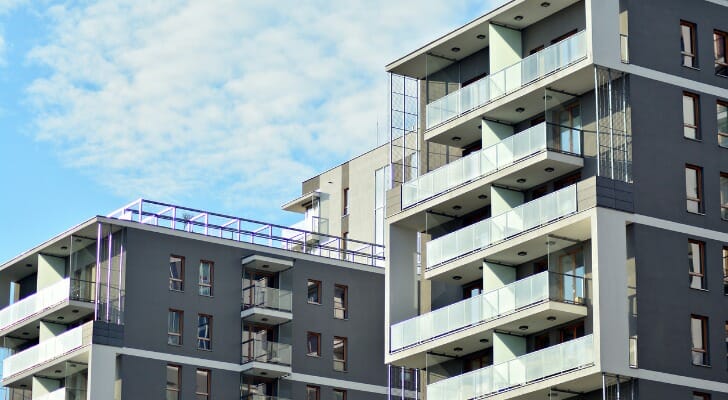
Apartments are one of the most common types of homes in today’s world. Some multi-family homes feature apartment-like features. However, most apartment buildings are combinations of many separate homes. It’s fully within the realm of possibility to buy an apartment, but most occupants rent them.
Each and every apartment is its own living space. The difference is that an apartment is just one section of a collective building. This is a major drawback for some people, as a home offers much more privacy.
Condominiums & Co-Ops
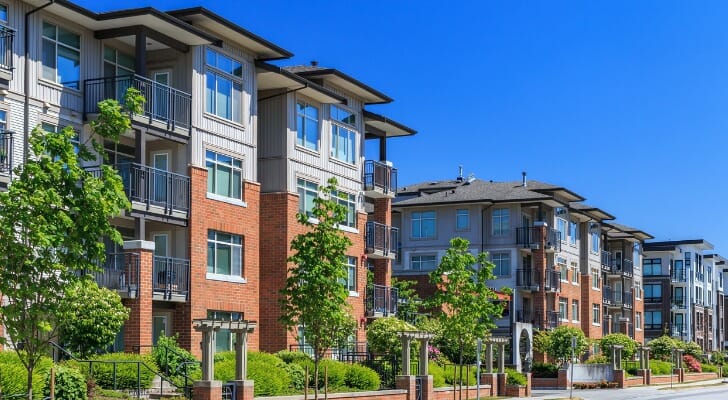
For starters, both condominiums (condos) and co-ops are types of apartments that are usually up for purchase rather than rent. Where they differ comes down to the specifics of your purchase paperwork.
When you buy a condo, you’re buying a unit within a building. If you purchase a co-op, you’re doing the same thing with the added stipulation of becoming a part owner of the corporation that owns the building. As a result of this complex agreement, some co-ops will request an interview with a prospective owner before letting their buy in.
Townhouse
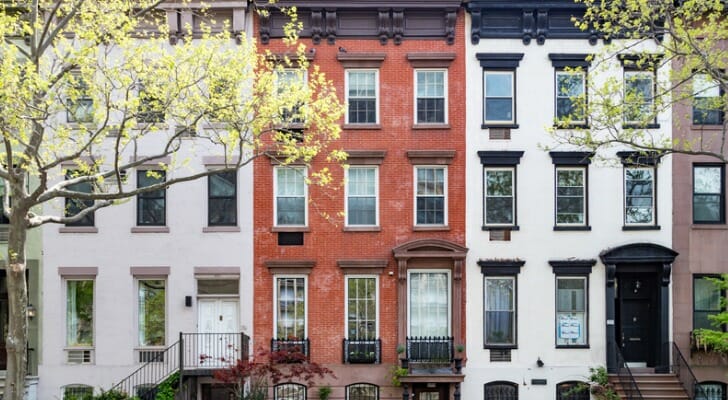
A townhouse is a single-family home that has either two or three thin floors. They’re traditionally set side-by-side between other townhouses, forming a tight row down a street or even a block. Townhouses were built to squeeze as much living territory into densely populated areas like cities.
Note that sometimes townhouses are sold as condos. If you go this route, you’ll technically own only the inside of the building. Should you buy a townhouse as a home, though, the property outside of the building will be in your name as well. The mortgages for these purchases can differ too.
Manufactured Homes
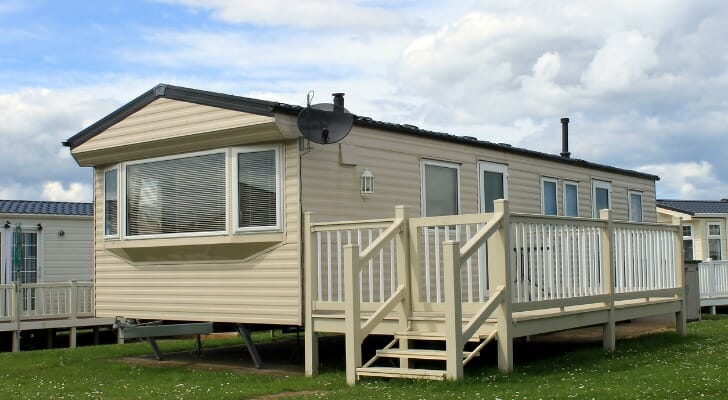
Manufactured homes are common in rural areas where there are generally lower levels of income. This is because they’re extremely cost-effective houses being that they employ a cookie-cutter approach.
Companies transport them already built on a truck bed to your property. You might have seen them on the road before, as they’re typically accompanied by a sign that reads “Oversize Load.” They come in the following variations:
- Singlewide: 600 – 1,300 square feet
- Doublewide: 1,000 – 2,300 square feet
You may hear manufactured homes referred to as “trailer homes” or “mobile homes,” but all three terms are essentially interchangeable. The U.S. Department of Housing and Urban Development (HUD) oversees the building of them through the Federal Manufactured Housing Program.
Tiny Home

Tiny homes are a rather new phenomenon that’s spreading throughout the world. Unsurprisingly, a tiny house generally sits anywhere from 100 to 400 square feet in size. The bottom floor of a tiny home is traditionally where the kitchen and bathroom are. Instead of having a separate bedroom, the top floor is often a loft that has stairs or a ladder leading up to it.
The minimal square footage of a tiny home might be too much to bear for some. However, the financial benefits of such a living situation are clear. Because tiny homes take up fewer resources, the average cost to build and maintain one is merely a fraction of what a full-size home would cost.
The Bottom Line
As you can see, there are a lot of different types of homes and each has its own unique purpose in the marketplace. The right one for you could be determined by many factors from the size or cost to where you plan on living. Overall, you can take the pros and cons of each into consideration before making your next move.
Tips for Buying a Home
- Integrating a mortgage into your financial life is much easier said than done. Financial advisors deal with this process plenty, making them great potential partners. It can be tough to find an advisor that you really trust, though. SmartAsset’s free tool matches you with up to three financial advisors who serve your area, and you can interview your advisor matches at no cost to decide which one is right for you. If you’re ready to find an advisor who can help you achieve your financial goals, get started now.
- Don’t start your search for a new home without first doing an in-depth analysis of what you can afford to spend. There are many factors that go into this equation, like closing costs and homeowners insurance. In other words, it can be difficult to make an accurate assessment. To get the ball rolling, stop by our home affordability calculator.
Photo credit: ©iStock.com/Vasyl Dolmatov, ©iStock.com/Paulbr, ©iStock.com/PattieS, ©iStock.com/bauhaus1000, ©iStock.com/bazillmer, ©iStock.com/Bartek71, ©iStock.com/RomanBabakin, ©iStock.com/Volodymyr Kyrylyuk, ©iStock.com/deberarr, ©iStock.com/uptonpark, ©iStock.com/Mechelle Brooks
